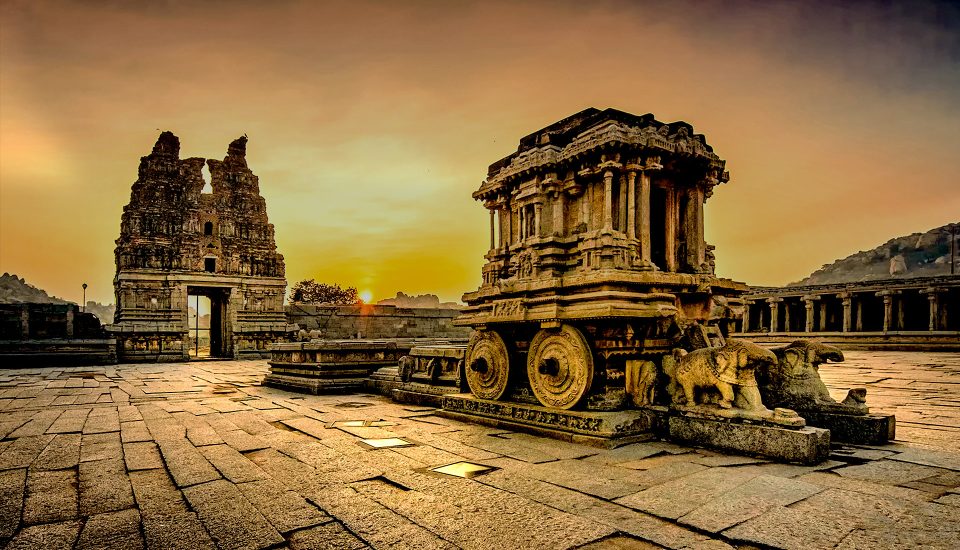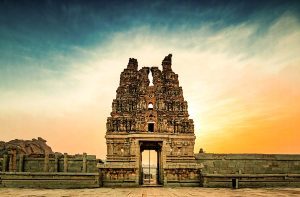
Hampi: The enduring appeal of world's largest city in 16th century

Situated amid a breathtaking boulder-strewn, rusty-hued landscape along the banks of the Tungabhadra River, Hampi, drenched in history and imbued with old-world charm, must be on everyone’s bucket list. The capital city of the mighty Vijayanagara Empire, it was founded by Harihara 1 and Bukka 1 in 1336 but was ransacked by the rulers of the Deccan in 1565 for a period of six months and then abandoned.
This famous city, which had once stood tall, a place where merchants had traded in diamonds, pearls, horses, fine silks and brocades, is said to have been bigger than Rome or Baghdad. It was the world’s largest city in the 16th century.
Also read: Tirumala Devasthanam says Hanuman was born at Tirumala Hills, not Hampi
“The city is such that the pupil of the eye has never seen a place like it, and the ear of intelligence has never been informed that there existed anything to equal it in the world”, marvelled a 15th century Persian ambassador Abdul Razaak. There were opulent palaces, marvelous temples, massive fortifications, baths, markets, aquaducts, pavilions, stables for royal elephants, and elegantly carved pillars.
Austere, grandiose site
The UNESCO site describes Hampi thus: The austere, grandiose site of Hampi was the last capital of the last great Hindu Kingdom of Vijayanagar. Its fabulously rich princes built Dravidian temples and palaces which won the admiration of travellers between the 14th and 16th centuries. Conquered by the Deccan Muslim confederacy in 1565, the city was pillaged over a period of six months before being abandoned.
The Hampi ruins as they stand today have somehow withstood the ravages of time and manages to evoke memories of the grandeur of a bygone era. Declared as a World Heritage Site in 1986, Hampi, boasts of many intricately carved stunning monuments, beautiful temples and amazingly scientifically-built structures.
Some of the significant structures that make up the Hampi ruins are:
Virupaksha temple: One of Hampi’s oldest structures is this Shiva temple which dates back to the 7th century AD. It is nine-tiered and 50 meters in length, with a holy shrine, pillars, antechambers, and entranceways surrounding the temple. An elephant Lakshmi blesses devotees as they enter. It is a complex piece of engineering marvel as it includes fractals, geometric patterns created by repeating the same process with different scales, the Fibonacci number sequence in architectural design or the inverted shadow mystery of the temple contributed by concepts in physics.
 Vitalla temple complex
Vitalla temple complex
This incredible monument remains the pinnacle of Vijayanagar art and speaks of the superior quality of the craftsman of that period. The centerpiece here is an ornate stone chariot illustrated on our ₹50 note . It is dedicated to Garuda (an eagle), the escort of the Hindu deity, Lord Vishnu. The chariot built by by King Krishnadevraya in the 16th century has Dravidian-style architecture.
Also read: Kerala in monsoon beckons; here’s a choice of off-beat travel spots
The musical pillars inside this temple have fascinated people down the centuries as they produce musical tones when struck with a thumb. Those 56 pillars known as SaReGaMa pillars produce the seven musical notes despite being hollow. A visitor cannot enter this area. Apart from this, the temple has the largest monolithic Linga, a shrine dedicated to the Hindu deity, Lord Shiva, Badavi Linga. This lingam which is found in a sanctum sanctorum sans a ceiling is constantly immersed in water. If you drop a coin here and it happens to land on the Linga itself, your wishes are said to have been granted.
The largest statue in Hampi is that of Narsimha, one of the incarnations of the Hindu deity, Lord Vishnu. Seated on the coil of a giant seven-headed snake called Sesha, this God is seated in a cross-legged position and sports an aggressive look owing to its protruding eyes and facial expressions.
Other attractions in Hampi
Besides these main attractions, you can also visit the Kishkindha, where monkey king Sugriva is supposed to have brought Rama to show him the abducted Sita’s jewels; and the Hanuman temple on top of the Anjaneya Hill. There’s also the Hippie Town of Sanapur with its graffiti-laden streets and pretty little cafes! A Laughing Buddha Café strategically located on the bank of the Tungabhadra, serves everything from Israeli cuisine to Spanish and Mexican, and Indian dishes.
Photo-exhibition in Delhi-Rediscover Hampi
Delhi-based lensman Manoj Arora has captured the marvels of this UNESCO World Heritage Site and exhibiting them at a show titled ‘Rediscover Hampi’ at Main Art Gallery, Bikaner House, near India Gate from September 14 to September 22. His debut solo show, his photographs will display the different calibrations of light, as it falls on the rich art and architecture of the city. According to Arora, he chose to do an exhibition on Hampi because of its rich history and photographing the temples and monuments were like touching history.
Best time to visit Hampi: The best time to visit Hampi is between December to March, when the temperature is cool to walk around
How to get there: The best way to travel is to take the (overnight) Hampi Express from Bangalore, which stops at Hospet and from here you can take a car or auto to reach Hampi. It is a 17 km ride. One can take an overnight bus to Hampi from Bangalore, or else, set out for a road trip! The distance from Bangalore to Hampi is 340 KM approx and can be easily covered within 6 to 7 hours.
The nearest airport to Hampi is in Ballari district, which is 64km away from Hampi.


